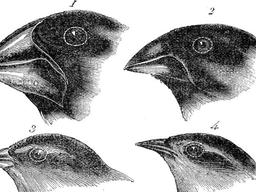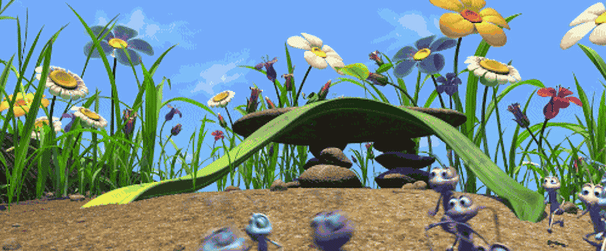
Evolution Quiz
Quiz by Clifford Traylor
Feel free to use or edit a copy
includes Teacher and Student dashboards
Measure skillsfrom any curriculum
Tag the questions with any skills you have. Your dashboard will track each student's mastery of each skill.
- edit the questions
- save a copy for later
- start a class game
- automatically assign follow-up activities based on students’ scores
- assign as homework
- share a link with colleagues
- print as a bubble sheet
- Q1
Natural selection acts on the phenotype rather than genotype.
truefalseTrue or False300s - Q2
In Charles Darwin’s time, many people thought that Earth and its living things were formed about a few thousand years ago.
truefalseTrue or False300s - Q3
On the Galápagos Islands, Charles Darwin observed
somewhat similar species, with traits that suited their particular environments.
completely unrelated species on each of the islands.
species completely unrelated to those found in South America
species identical to those found in England
300s - Q4
The two main sources of genetic variation are
directional selection and disruptive selection
single-gene traits
gene shuffling and mutations
genotype and phenotype
300s - Q5
The species of finches that Charles Darwin found on the Galápagos Islands displayed different structural adaptations. One of the adaptations that Darwin noted was the
birds’ different-shaped beaks.
number of eggs in each bird’s nest
similarities of the birds’ embryos
somewhat similar species, with traits that suited their particular environments.
300s - Q6
An adaptation is an inherited characteristic that can be
physical or behavioral
the result of artificial selection
physical or geographical
acquired during the organism’s lifetime
300s - Q7
Which statement about the members of a population that live long enough to reproduce is consistent with the theory of natural selection?
They will perpetuate unfavorable changes in the species
They are the ones that are best adapted to survive in their environment.
They tend to produce fewer offspring than others in the population
They transmit characteristics acquired by use and disuse to their offspring
300s - Q8
Darwin’s concept of evolution was NOT influenced by
his collection of specimens.
knowledge about the structure of DNA
his trip on the H.M.S. Beagle
the work of Charles Lyell.
300s - Q9
Which of the following statements describe what all members of a population share?
They are members of the same species.
They are geographically isolated from each other
They have identical genes.
They are temporally isolated from each other.
300s - Q10
The phenotypes for a typical polygenic trait can often be expressed as
allele frequencies
Mendelian ratios
a bar graph
a bell-shaped curve
300s - Q11
A change in a sequence of DNA is called a
recombination
mutation.
single gene trait
polygenic trait
300s - Q12
If a table shows the percentages of adenine at 22 percent and guanine at 28 percent in a DNA sample. How much Thymine should you expect to find in the sample?
28 percent
22 percent
44 percent
100 percent
300s - Q13
According to Darwin’s theory of natural selection, the individuals that tend to survive are those that have
the fastest offspring
the greatest number of offspring.
the ability to eat some plants
variations best suited to the environment.
300s - Q14
On the Galapagos Islands, Darwin also saw several different types of finch, a different species on each island. He noticed that each finch species had a different type of beak, depending on the food available on its island. The finches that ate large nuts had
lived on islands that had no vegetation
very thin long tongues
larger thicker beaks
long think beaks
300s - Q15
The diagram illustrates an embryonic stage of four organisms. Which of the following can be determined by observing the embryos in the diagrams?
the organisms are native to the same geographic area
the organisms belong to the same species,
The organisms share a common ancestor
The organism will all have tails later in life
300s
